ELAR 2.10
Author's purpose and craft: listening, speaking, reading, writing, and thinking using multiple texts. The student uses critical inquiry to analyze the authors' choices and how they influence and communicate meaning within a variety of texts. The student analyzes and applies author's craft purposefully in order to develop his or her own products and performances. The student is expected to:
- (1) discuss the author's purpose for writing text;
- (A) discuss how the use of text structure contributes to the author's purpose;
- (B) discuss the author's use of print and graphic features to achieve specific purposes;
- (C) discuss the use of descriptive, literal, and figurative language;
- (D) identify the use of first or third person in a text; and
- (E) identify and explain the use of repetition.
- Free Plan
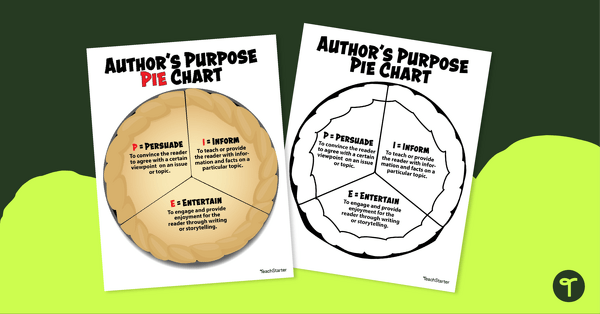
Author's Purpose Anchor Chart
A poster highlighting the three main reasons an author writes a piece of text - to persuade, to inform, to entertain.
- Free Plan
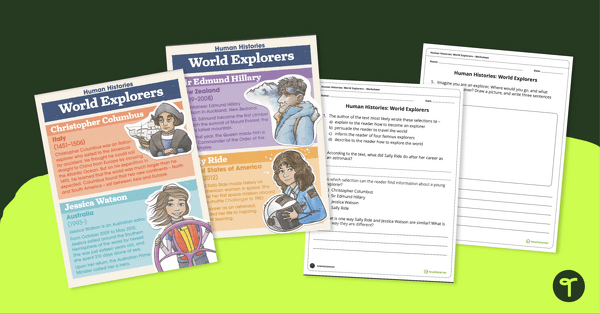
Human Histories: World Explorers – Comprehension Worksheet
A free comprehension worksheet paired with an informational text about world explorers.
- Plus Plan
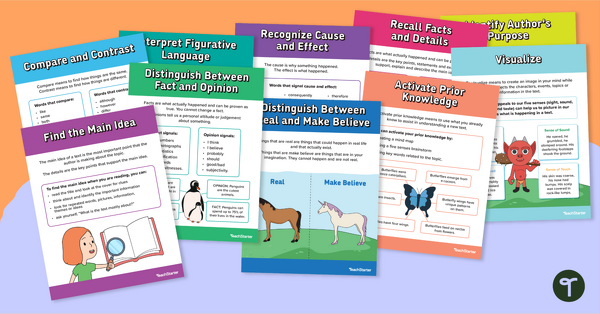
Reading Comprehension Strategies Anchor Charts
Provide young readers with concrete examples of reading strategies with a set of 18 ready-made reading anchor charts.
- Plus Plan
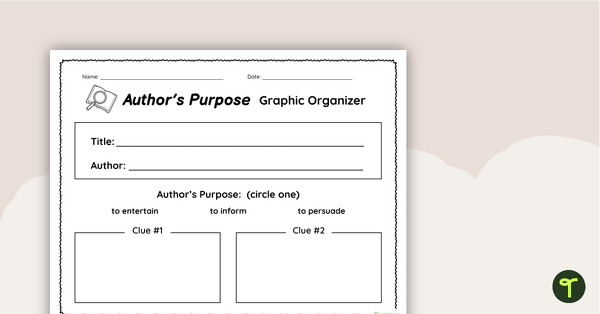
Author's Purpose Graphic Organizer
Organize ideas and context clues that support the author's purpose from your assigned texts.
- Plus Plan
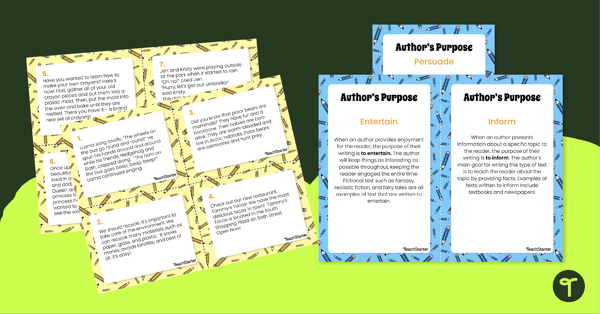
Author's Purpose Sorting Activity
In this author's purpose activity, students will sort 20 phrase cards into groups by identifying whether the text is meant to inform, persuade, or entertain.
- Free Plan
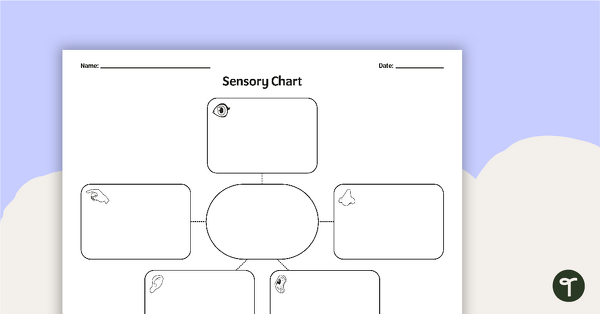
Sensory Chart Graphic Organizer
A graphic organizer for students to use when categorizing sensory details.
- Plus Plan
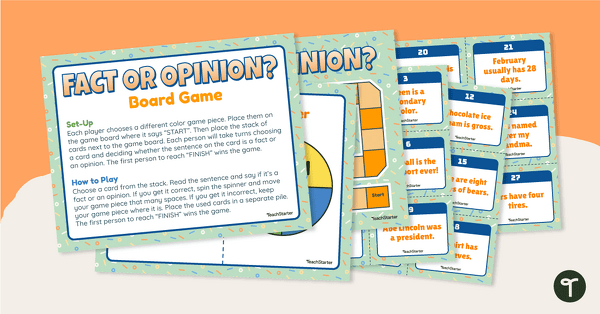
Fact and Opinion Board Game
Practice differentiating between fact and opinion with a fun and engaging board game.
- Plus Plan
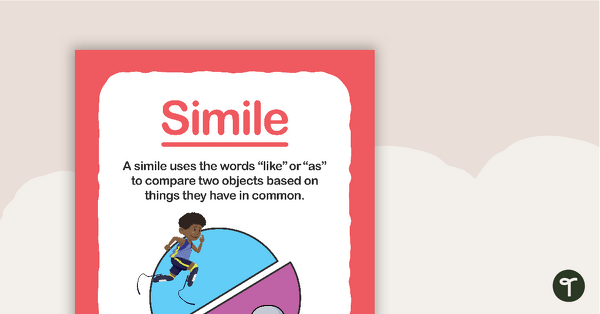
Simile Poster (Primary)
Show your students an example of a simile using this colorful classroom display poster.
- Free Plan
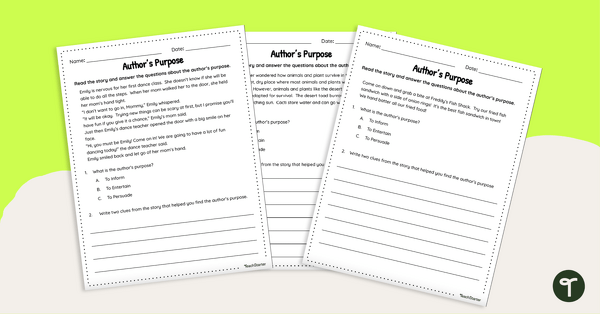
Free Author's Purpose Worksheets
Assess reading comprehension by reviewing 3 short passages and answering questions about the author's purpose.
- Plus Plan
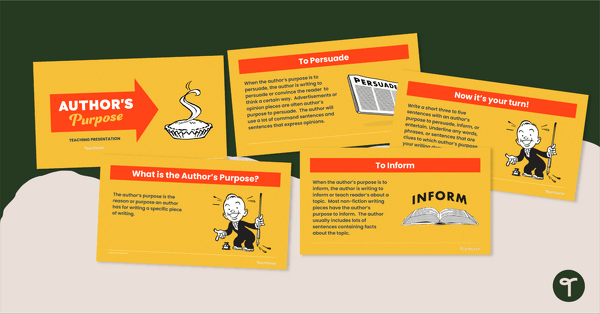
Author's Purpose Teaching Presentation
Teach your students to identify the author’s purpose in a text with a teaching presentation.
- Plus Plan
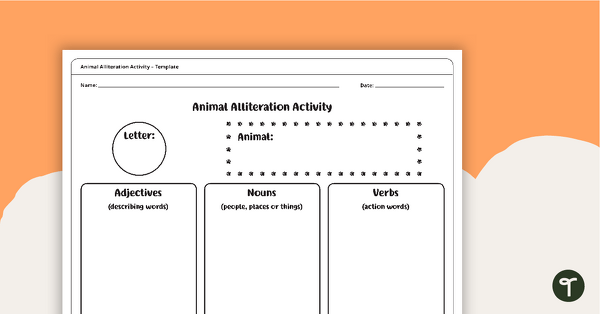
Animal Alliteration Activity - Brainstorming Template
Use this brainstorming template when teaching about alliteration.
- Free Plan
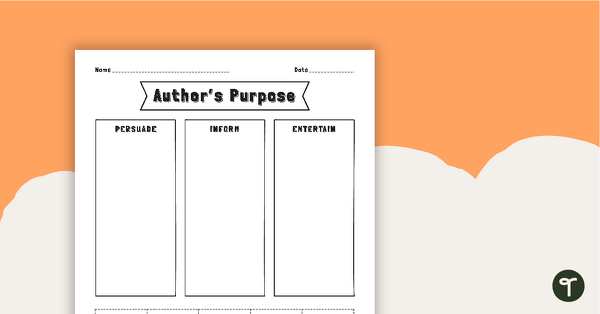
Author's Purpose - Sorting Worksheet
A teaching resource to help teach your students about author's purpose.
- Plus Plan
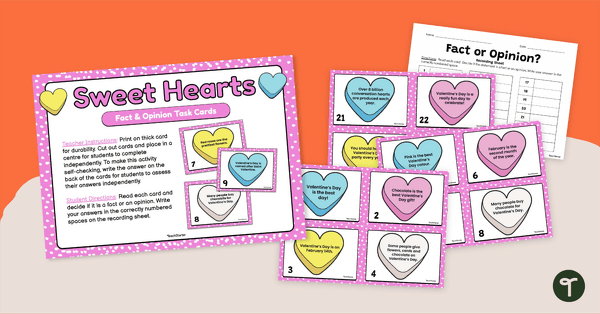
Sweet Hearts Fact and Opinion - Valentine's Day Activity
Practice sweet reading skills on Valentine’s Day with a set of Sweetheart Fact and Opinion task cards.
- Plus Plan
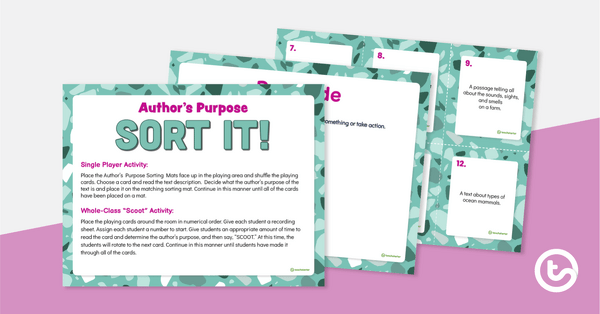
Author's Purpose SORT IT!
Analyze 24 text examples and determine which of the 5 purposes of writing each of the sorting cards belongs to.
- Plus Plan
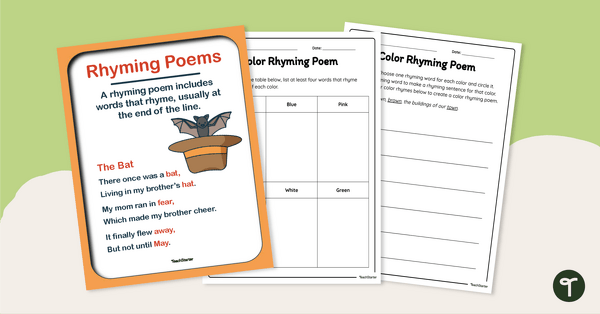
Rhyming Poems Poster
A poster providing a definition and example of a rhyming poem.
- Plus Plan

Onomatopoeia Poster
A poster providing a definition and examples of onomatopoeia.
- Plus Plan
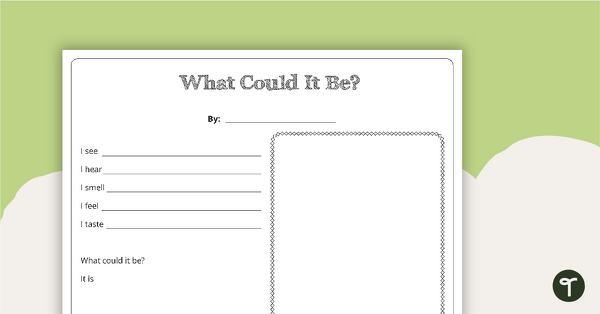
What Could It Be? - Sensory Poem Template
Use this template when teaching students how to write sensory poems.
- Plus Plan

Identify Author's Purpose Poster
A poster highlighting how to identify the author's purpose when reading a piece of text.
- Plus Plan
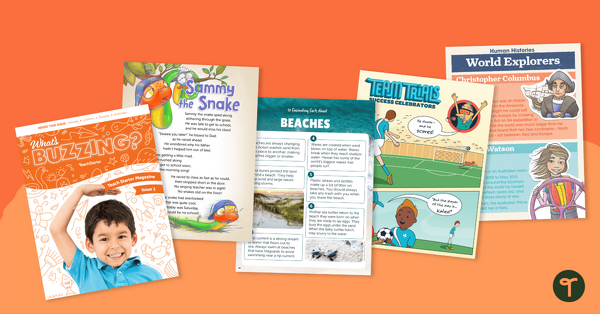
Grade 2 Magazine - What's Buzzing? (Issue 1)
A beautifully designed, 24-page reading magazine specifically written for Grade 2 students.
- Plus Plan
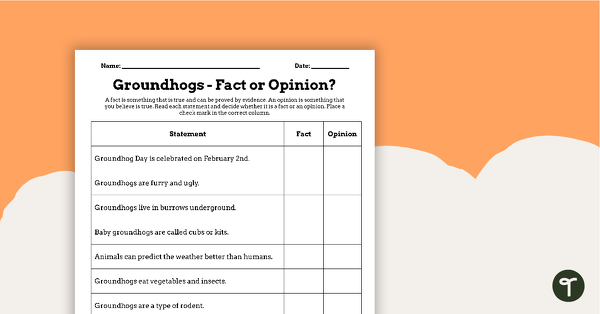
Groundhogs - Fact or Opinion Worksheet
Practice identify facts and opinions with a Groundhog Day worksheet.
- Plus Plan
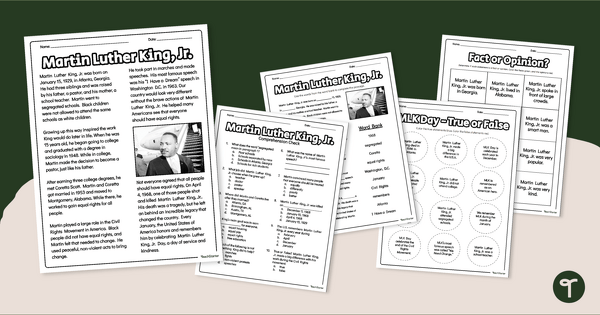
Martin Luther King, Jr. Reading Activity Pack
Apply a range of reading comprehension strategies to learn about Martin Luther King, Jr.
- Plus Plan
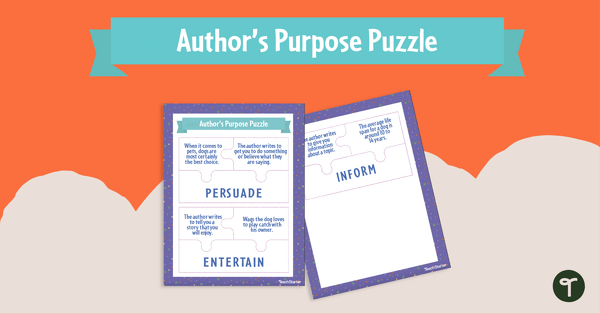
Author's Purpose - Puzzle Activity
A teaching resource to help teach your students about author’s purpose.
- Plus Plan
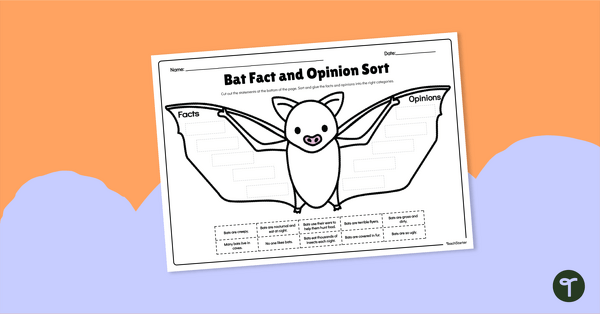
Halloween Worksheet — Bat Facts and Opinions
Practice identifying facts and opinions with a Halloween worksheet activity about bats.
- Plus Plan
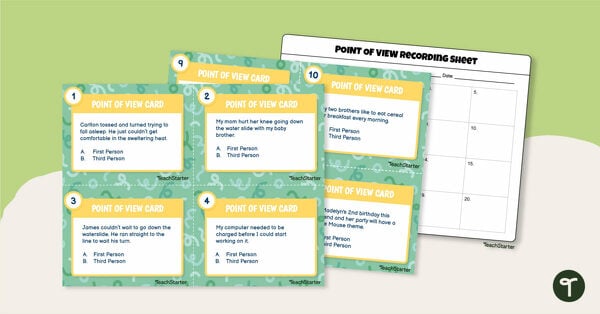
Point of View Task Cards - Beginner Set
Use these colorful, fun task cards to help your beginning reader identify first, and third-person point of view (POV)
- Plus Plan
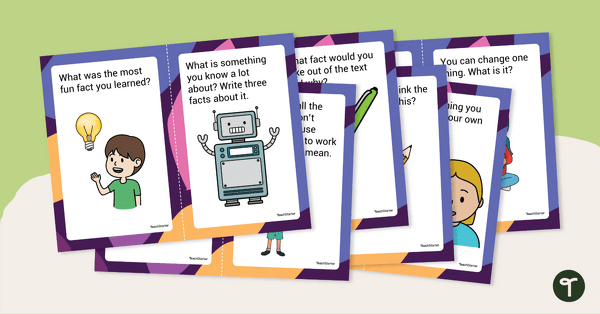
Fun With Nonfiction Task Cards
Solidify your nonfiction reading response lessons with this set of 12 comprehension task cards.
- Plus Plan
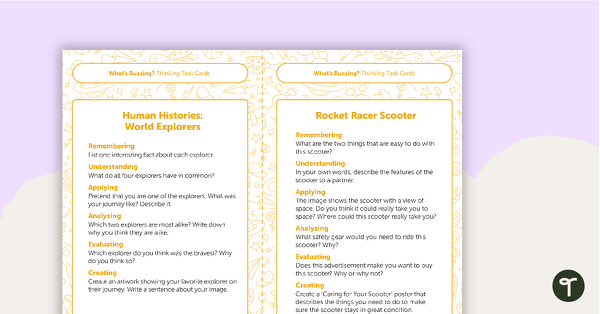
Grade 2 Magazine - "What's Buzzing?" (Issue 1) Task Cards
Five sets of literacy rotation task cards to be used in conjunction with issue 1 of Teach Starter's Grade 2 magazine.
- Plus Plan
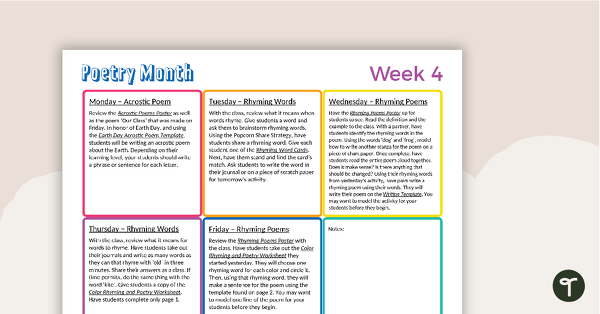
Primary Weekly Poetry Guide - Weeks 4 and 5
Use this weekly poetry guide to celebrate National Poetry Month in your primary classroom.
- Plus Plan
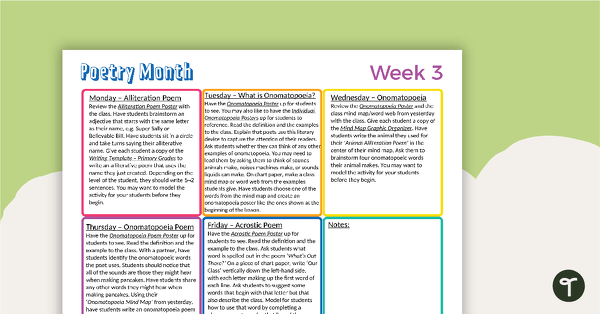
Primary Weekly Poetry Guide - Week 3
Use this weekly poetry guide to celebrate National Poetry Month in your primary classroom.
- Plus Plan
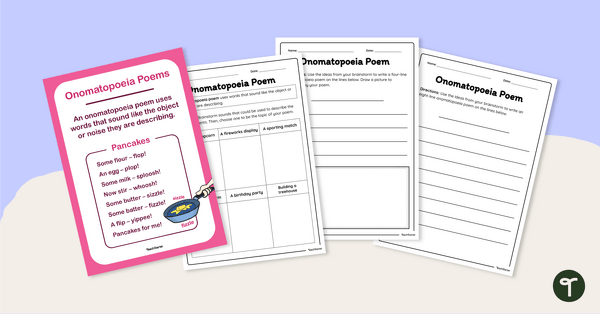
Onomatopoeia Poems Poster
A poster providing a definition and example of an onomatopoeia poem.
- Plus Plan
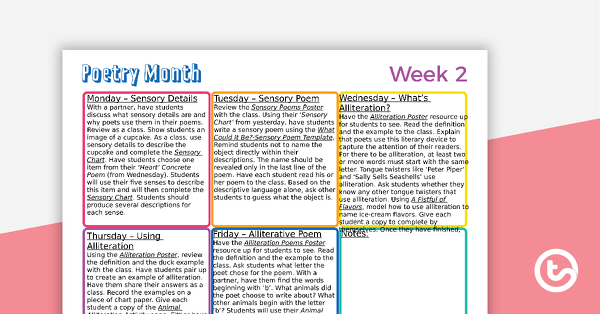
Primary Weekly Poetry Guide - Week 2
Use this weekly poetry guide to celebrate National Poetry Month in your primary classroom.
- Plus Plan
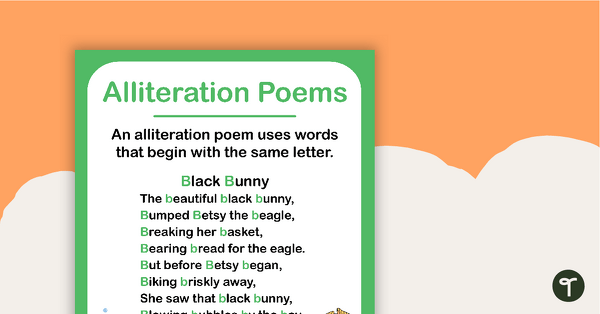
Alliteration Poem Poster
A poster providing a definition and example of an alliteration poem.
- Plus Plan
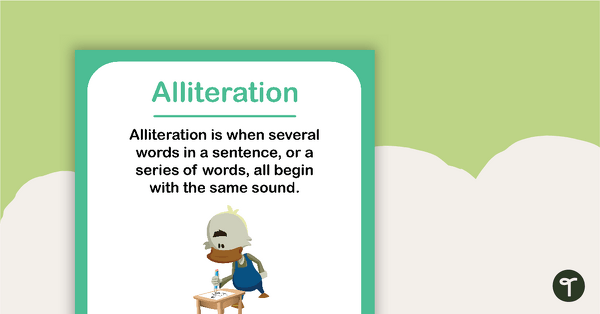
Alliteration Poster For Young Students
A poster to use with young students when teaching alliteration.